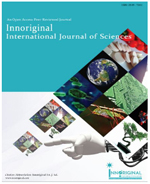HEAT SHOCK PROTEIN USES IN VACCINE DEVELOPMENT FOR INFECTIOUS DISEASES AND CANCER
Abstract
Objectives: Heat Shock protein or Heat stress protein (Hsp) are produced by all organisms to overcome heat stress. Henceforth, they are critical controllers of cell multiplication, separation and unequivocally embroiled in the sub-atomic coordination of malignant growth improvement and movement the same number of their customers is settled oncoproteins in numerous tumor types.Methods:Â Curiously, tumor cells are more HSP chaperonage-subordinate than ordinary cells for multiplication and endurance on the grounds that the oncoproteins in malignant growth cells are frequently misfolded and require enlarged chaperonage movement for rectification It also enhances survival rate of organisms. It also acts as immunogen in the host. So it is useful to vaccine development.Results: The production cost of Hsp is low, production method and isolation technique is also easy.Conclusion: If it is combined with DNA vaccine, it will produce long-term immunity.Keywords: Heat shock protein, Heat stress protein, VaccineReferences
Beckmann, R.P., L. Mizzen, and W.J. Welch, Interaction of Hsp 70 with newly synthesized proteins: implications for protein folding and assembly. Science, 1990. 248(4957): p. 850-854.
Hutter, M.M., et al., Heat-shock protein induction in rat hearts. A direct correlation between the amount of heat-shock protein induced and the degree of myocardial protection. Circulation, 1994. 89(1): p. 355-360.
Enjalbert, B., A. Nantel, and M. Whiteway, Stress-induced gene expression in Candida albicans: absence of a general stress response. Molecular biology of the cell, 2003. 14(4): p. 1460-1467.
Estruch, F., Stress-controlled transcription factors, stress-induced genes and stress tolerance in budding yeast. FEMS microbiology reviews, 2000. 24(4): p. 469-486.
Angelidis, C.E., I. Lazaridis, and G.N. Pagoulatos, Constitutive expression of heatâ€shock protein 70 in mammalian cells confers thermoresistance. European journal of biochemistry, 1991. 199(1): p. 35-39.
Barazone, M., Paving fabric interlayer membranes and installation procedures over the past 20 years. Geotechnical Fabrics Report, 1990. 10(4).
Georgopoulos, C. and W. Welch, Role of the major heat shock proteins as molecular chaperones. Annual review of cell biology, 1993. 9(1): p. 601-634.
Hansen, L.K., J. Houchins, and J.J. O'Leary, Differential regulation of HSC70, HSP70, HSP90α, and HSP90β mRNA expression by mitogen activation and heat shock in human lymphocytes. Experimental cell research, 1991. 192(2): p. 587-596.
Muruganandam, M., Engineered plasmid DNA vaccine for Staphylococcus aureus. Int J Biol Technol, 2011. 2(1): p. 7-10.
Tamizhazhagan, V., et al., Social and Economic Burden of Cancer on 2020-Minireview. J Biol Med Sci, 2017. 1(103): p. 2.
Petrovsky, N. and J.C. Aguilar, Vaccine adjuvants: current state and future trends. Immunology and cell biology, 2004. 82(5): p. 488-496.
Adams, A. and K.D. Thompson, Biotechnology offers revolution to fish health management. Trends in biotechnology, 2006. 24(5): p. 201-205.
Cleland, J.L., Single-administration vaccines: controlled-release technology to mimic repeated immunizations. Trends in biotechnology, 1999. 17(1): p. 25-29.
Olle, D.A., Treating Cancer with Immunotherapy and Targeted Therapy. 2019: Stylus Publishing, LLC.


